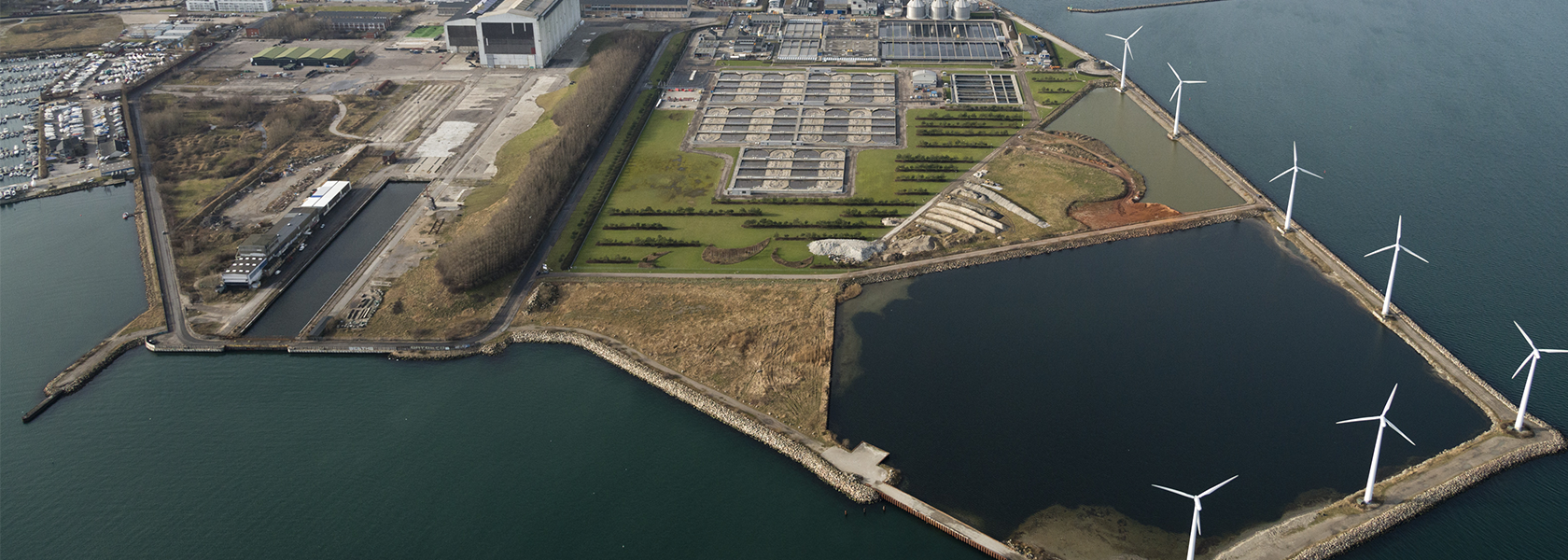

Nitrous Oxide Measurement as Key Step towards Climate-Neutral Wastewater Treatment
The Global Challenge
Climate and environmental protection are among the prime concerns of the water industry - and not just since the public debate on climate change gained momentum. Measures to make the sector more sustainable and reduce negative effects on the climate can be recognized worldwide. In this context, the emission of greenhouse gases at wastewater treatment plants is also coming into focus.
In Denmark, particular attention is already being paid to nitrous oxide emissions, but action can also be seen in other countries. For example, in its strategy paper "Road to Net Zero 2030", the British utility Anglian Water identified nitrous oxide as the largest single factor in the company's emissions budget, accounting for almost half of Scope 1 emissions1. This order of magnitude is fairly common by international standards.
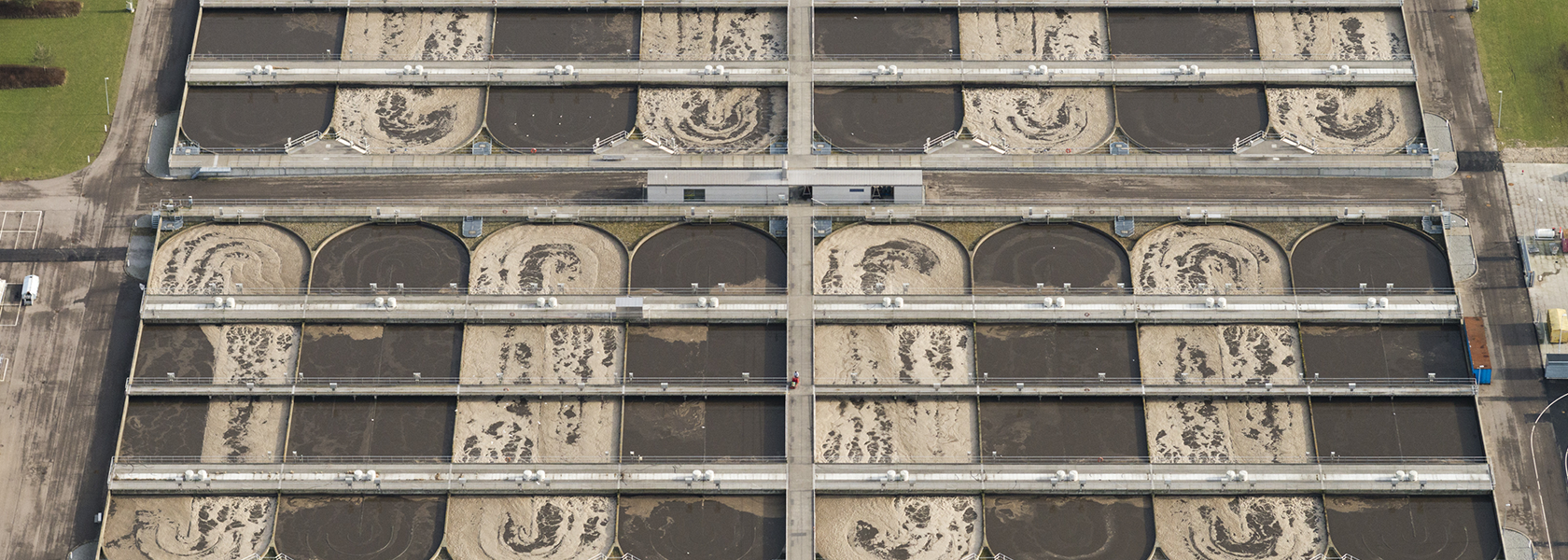
Nitrous Oxide Formation at the Treatment Plant
Nitrous oxide (N2O) has a high global warming potential (=273 CO2-eq2) and can be produced in biological wastewater treatment as a by-product of nitrification and denitrification3. According to the IPCC report from 2019, an emission factor of 1.6% N2O-N per TNinflow is assumed for an "average wastewater treatment plant".
However, N2O is highly process-dependent and emission factors of between 0-20% have been found in previous studies, depending on the configuration and local conditions. Furthermore, a strong seasonal variation is usually observed, and targeted measures such as adjusting the aeration can sometimes achieve significant reductions4.
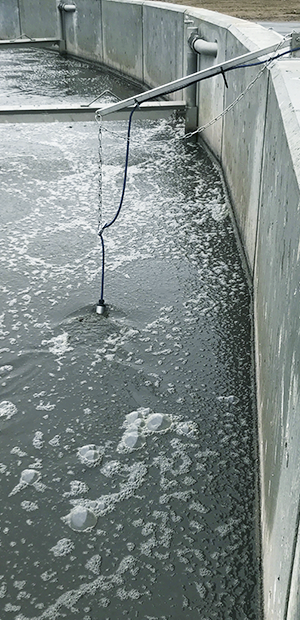
Measure Nitrous Oxide Directly in the Process
The N2O Wastewater System is unique in its ability to measure dissolved nitrous oxide directly in the process. It provides continuous online data and enables the detection of short and long-term trends as well as correlations with other process parameters. It can thus be used for the optimization of process control to reduce emissions. In addition, the measured concentration is used to calculate N2O emissions based on air stripping. The method for calculating emissions has been validated by direct comparison with off-gas measurements at several wastewater treatment plants, scientifically scrutinized5 and is considered state of the art for operators worldwide.
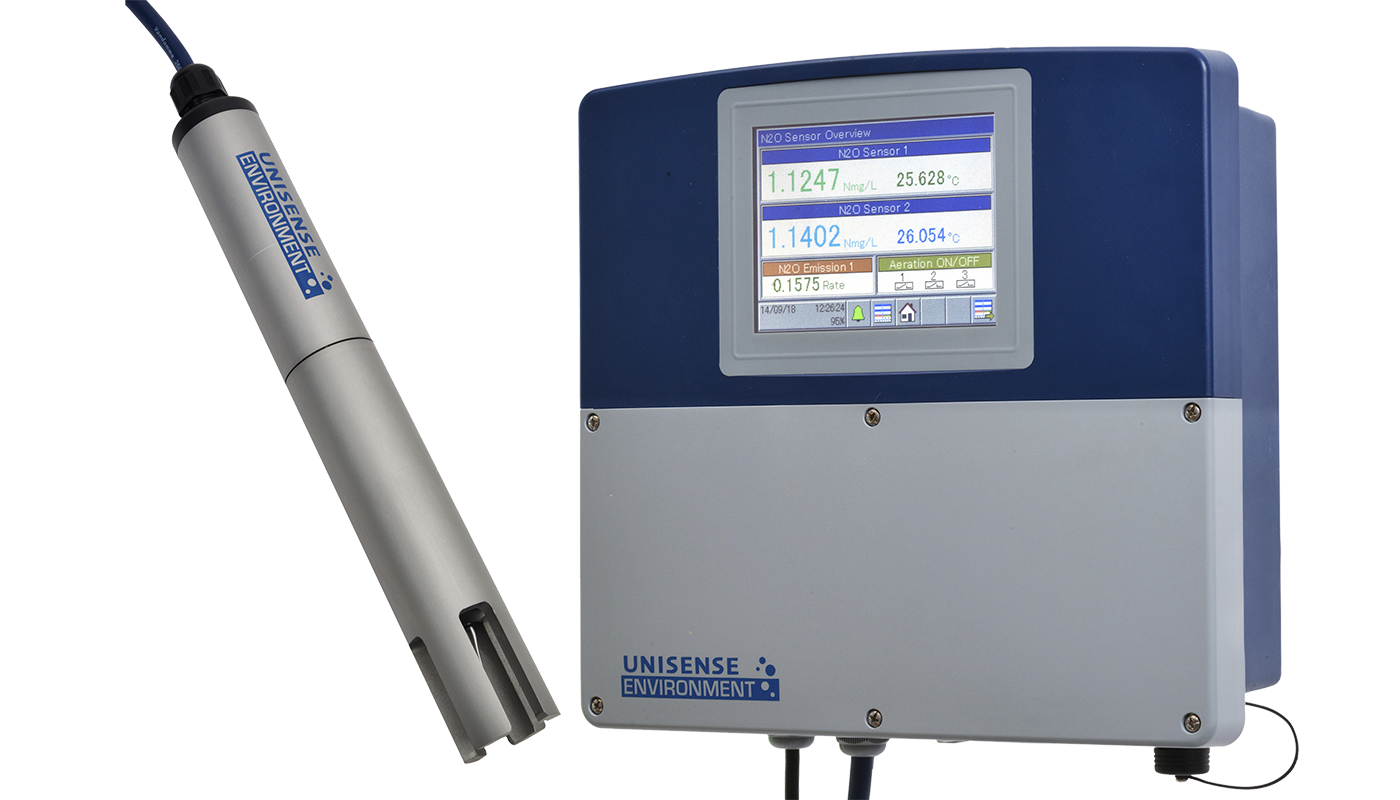
Action through Measurability
The availability of a viable method has led to sector-wide policy initiatives in Denmark. Similar efforts can be observed around the world, e.g. in the UK, the Netherlands, the USA and New Zealand. With the goal of a climate and energy neutral water sector by 2030, the Danish government has asked wastewater treatment plant operators to submit data on greenhouse gas emissions..
To improve the baseline data, a funding measure was launched to realize a large-scale measurement campaign. The report from 2020 summarizes long-term measurements (at least 1 year) from 9 Danish wastewater treatment plants and determines the national emission factor of 0.84%6. However, large differences were also found here between the individual wastewater treatment plants and process configurations. In particular, the processes operated under high load for the treatment of side stream liquors showed increased emissions (see Fig. 2).
Based on these studies, the Danish government is planning to introduce a limit value for nitrous oxide emissions at wastewater treatment plants with more than 30,000 PE in 2025. The extension to 10,000 PE plants is under consideration. The detailed structure of the calculation of levies and reporting requirements is still unclear at the time of writing.
Process Optimization as a Goal
However, it is certain that an emission factor alone cannot be used to develop measures to reduce nitrous oxide. Instead, the study concludes with the recommendation to expand existing online measurements and conduct further studies on the relationship between wastewater load, aeration strategy, sludge volume and age, and nitrous oxide emissions. Beyond the potential to reduce emissions, this can provide a better understanding of the biological processes and increase process efficiency and stability.
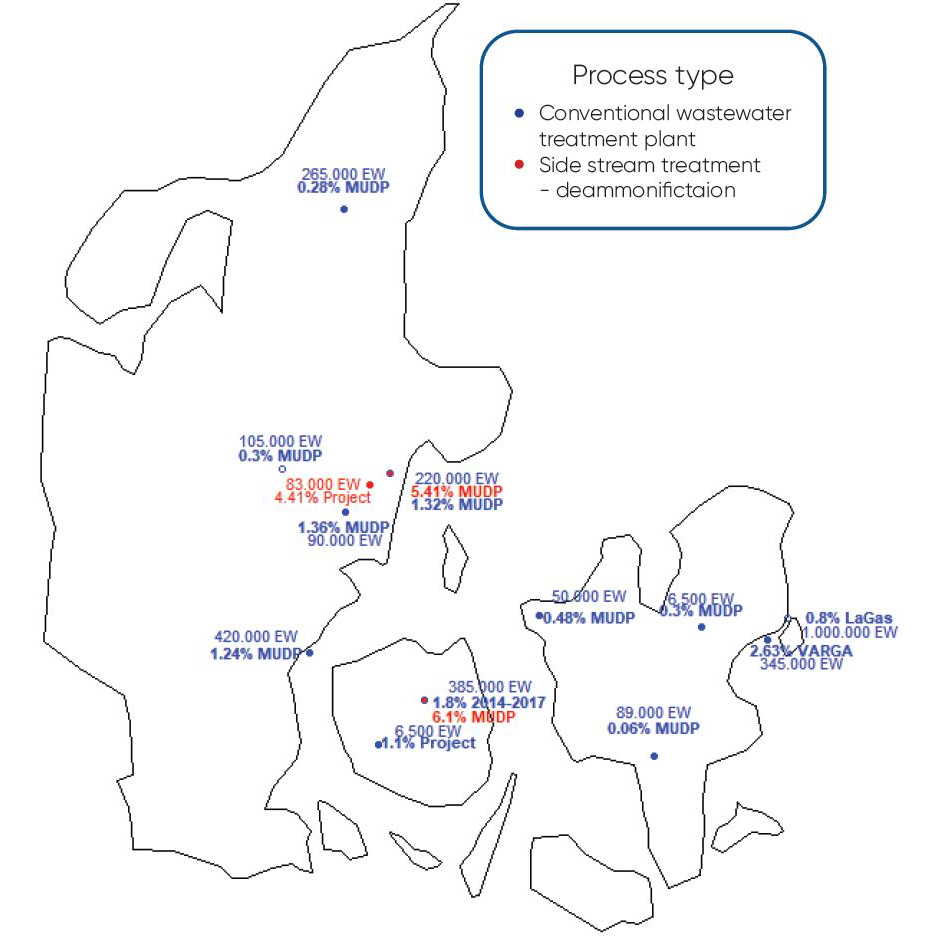
The Economics of Climate Optimization - Energy and Climate Neutrality
Electricity savings based on reduced aeration can have a negative impact on the formation of nitrous oxide, depending on site conditions. Furthermore, the emissions caused by electricity purchases will fall sharply in future as renewable energies are expanded. Therefore, the overall climate effect must always be taken into account when optimizing a treatment plant.
Nitrous oxide reduction through process optimization can be a cost-effective method for achieving significant improvements. Considering the acquisition and operating costs for permanent measurement, a mitigation price of approx. 2 €/t CO2-eq was calculated for the Avedøre wastewater treatment plant, for example7. At this plant, up to 75% reduction in nitrous oxide emissions could be realized through process changes.
Operators of several hundred wastewater treatment plants around the world are currently monitoring dissolved nitrous oxide as an online process parameter, and many are implementing mitigation strategies on this basis. With this growing body of practical experience, the sector has the tools and knowledge to achieve climate-neutral wastewater treatment.
Author: Dr. Bastian Piltz, Unisense Environment A/S
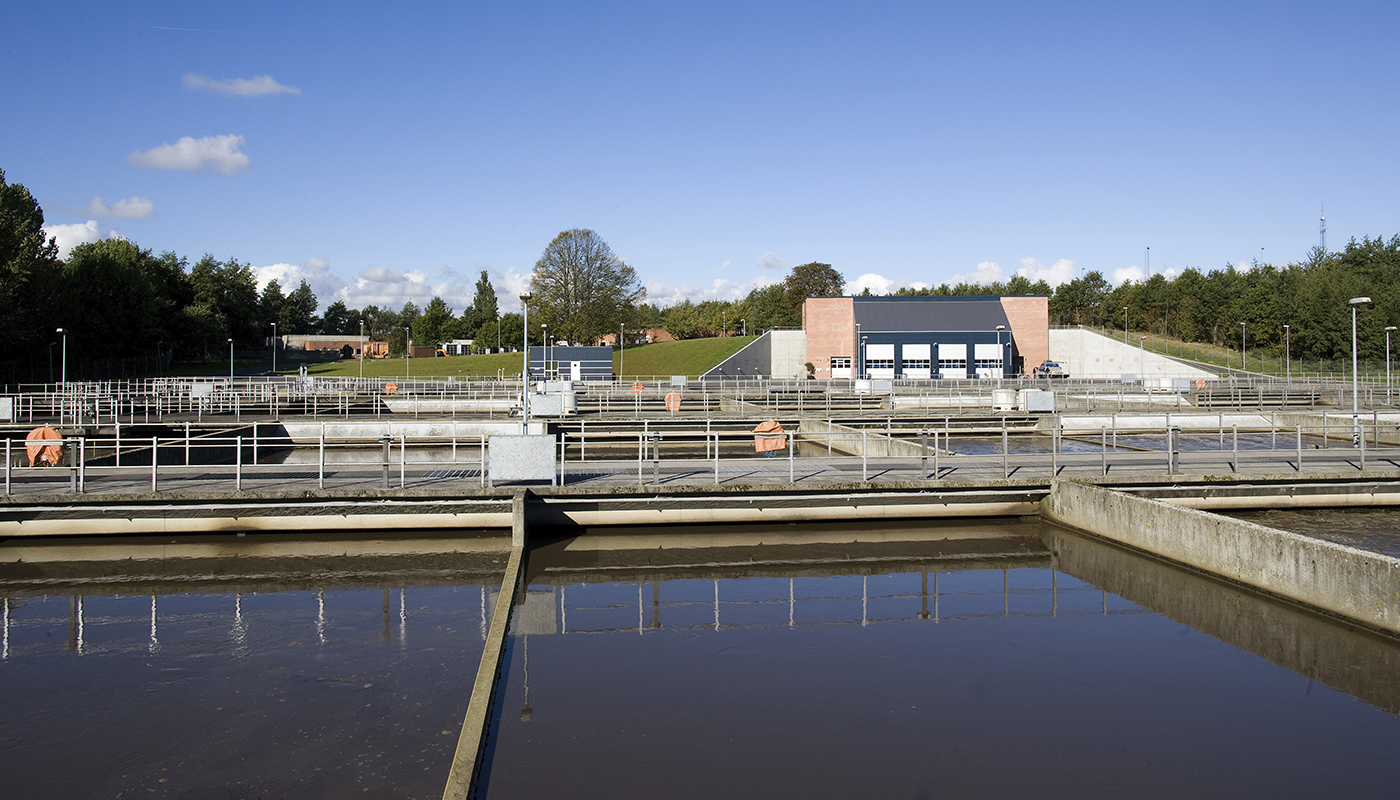
From 2025, its emission will be regulated by law in Denmark. Similar changes are expected at EU and global level.
- National emission factor: 0.84% N2O-N per TNfeed
- Strong seasonal and process-dependent variation
- Long-term measurements absolutely necessary
- Emissions can be reduced by understanding the process
Literature
1 Anglian Water, “Our net zero strategy to 2030”, https://www.anglianwater.co.uk/siteassets/household/environment/net-zero-2030-strategy-2021.pdf
2 IPCC - Intergovernmental Panel on Climate Change, “2019 Refinement to the 2006 IPCC Guidelines for National Greenhouse Gas Inventories”, 2019.
3 M. J. Kampschreur, H. Temmink, R. Kleerebezem, M. Jetten, and M. C. M. van Loosdrecht, “Nitrous oxide emission during wastewater treatment”, Waterv Res., vol. 43, no. 17, pp. 4093–4103, 2009.
4 V. Vasilaki, T. M. Massara, P. Stanchev, F. Fatone, and E. Katsou, “A decade of nitrous oxide (N2O) monitoring in full-scale wastewater treatment processes: A critical review”, Water Res., vol. 161, pp. 392–412, 2019,
5 C. Baresel, S. Andersson, J. Yang, & M.H. Andersen, (2016). "Comparison of nitrous oxide (N2O) emissions calculations at a Swedish wastewater treatment plant based on water concentrations versus off-gas concentrations", Advances in Climate Change Research, 7(3), 185-191.
6 Danish Environment Agency (MUDP), “Lattergaspulje - Dataopsamling på måling og reduktion af lattergasemissioner fra renseanlæg”, 2020.
7 Danish Environment Agency (MUDP), ”VARGA - Vandressource Genvindingsanlæg”, 2023
Tech Notes & References
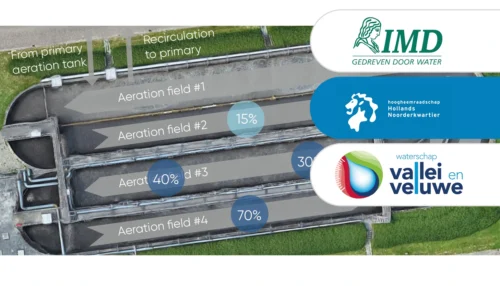
Two liquid phase N2O sensors accurately represent process dynamics and emissions in most common raceway and recirculation reactors.
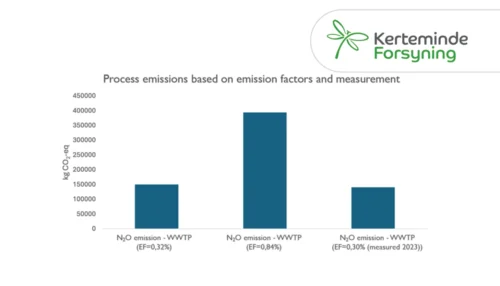
Learn how Kerteminde Forsyning applied nitrous oxide data to reduce the formation of N2O while maintaining low nitrogen emissions
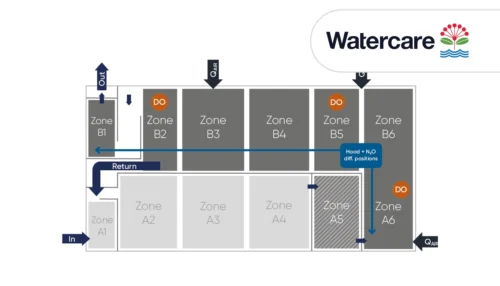
Case Study: Full-scale comparison of N2O emissions determined by liquid sensors and off-gas measurement
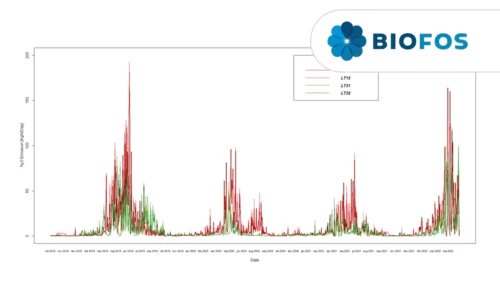
Significant 3-fold increase in IPCC2019 wastewater N2O emission factor supported by Danish studies.
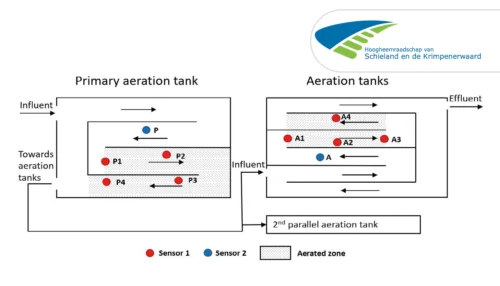
A case study from Kralingseveer WWTP in the Netherlands explores the influence of sensor placement.
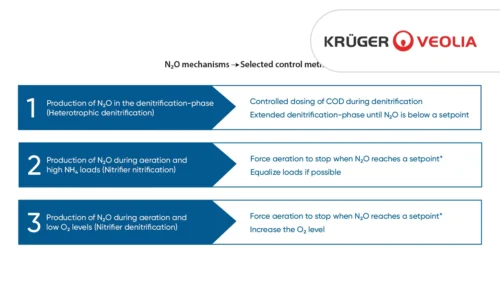
Based on data from Danish WWTPs through advanced online-control.
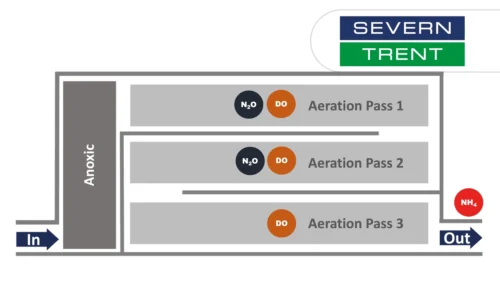
Learn about the results from N2O monitoring in the activated sludge tanks at Severn Trent’s Spernal sewage treatment plant
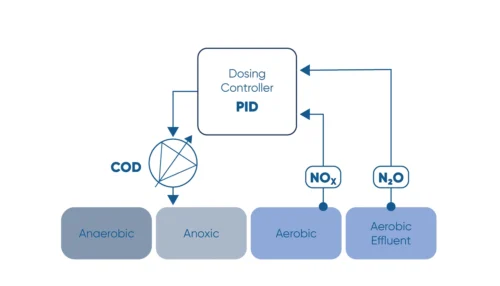
Monitor the N2O concentration in the liquid and use N2O as a control parameter for carbon dosage in the denitrification process.
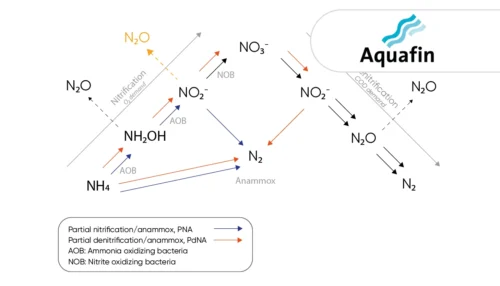
Learn how the water utility Aquafin controls emissions from deammonification processes using the the N2O Wastewater Sensor
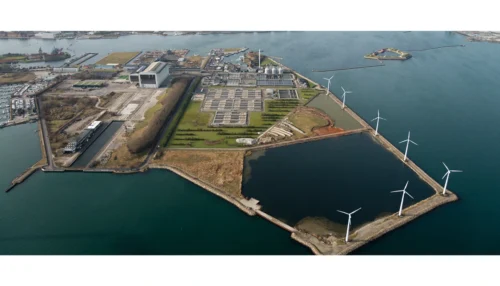
Greenhouse gas emissions at wastewater treatment plants are coming into focus as the water industry works to reduce its climate footprint
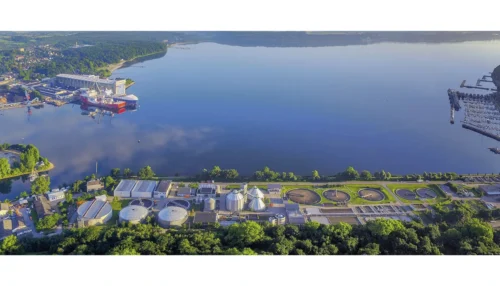
The investment costs had initially deterred us somewhat. However ...
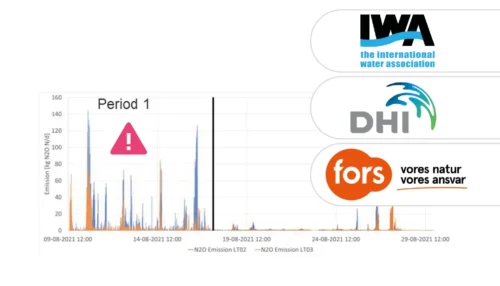
A study of three very different WWTPs in Denmark: Bjergmarken (125,000 PE), Holbæk (60,000 PE), and Hvalsø (11,570 PE)
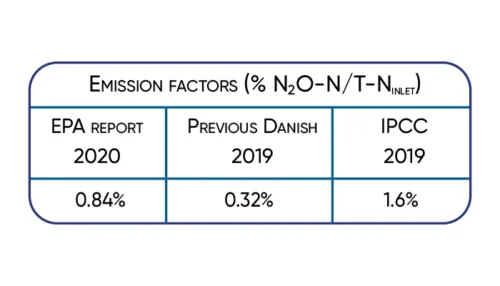
The available data show that the nitrous oxide emission varies in time and between wastewater treatment plants.
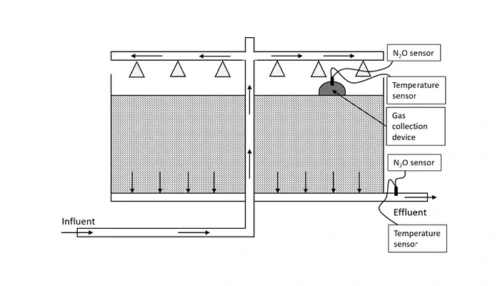
Information regarding N2O emissions from trickling filters is limited, partly caused by the difficulties in capturing off-gases.
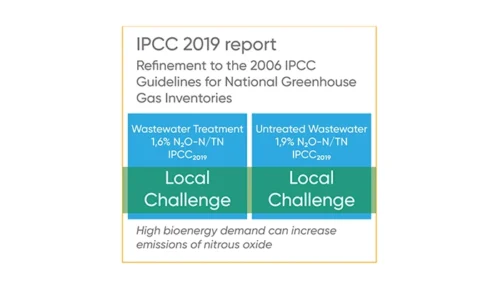
Significant 3-fold increase in IPCC2019 wastewater N2O emission factor supported by Danish studies.
